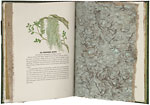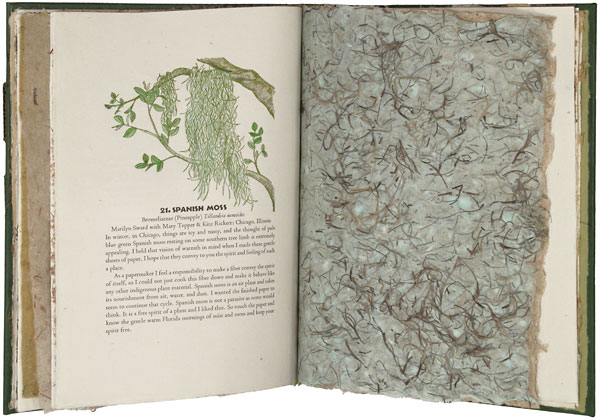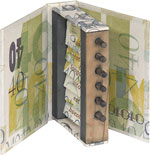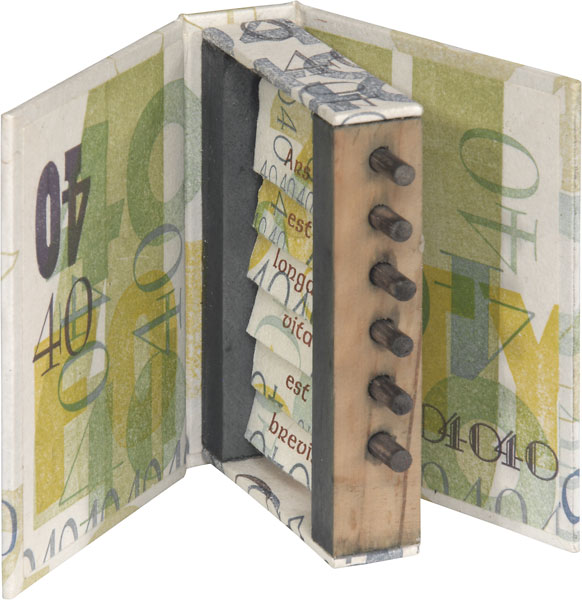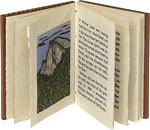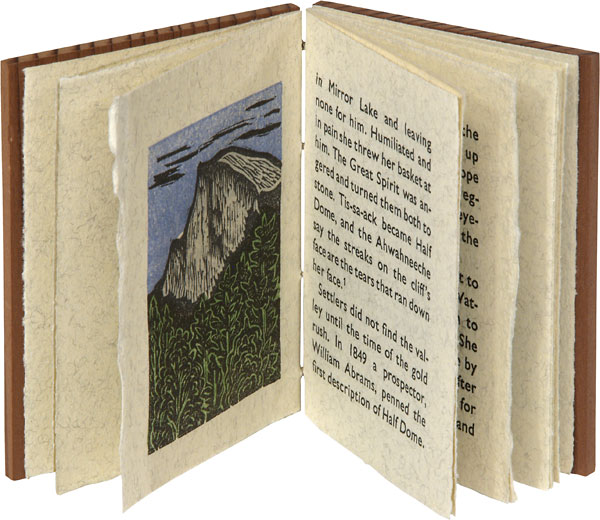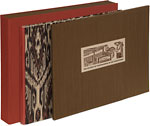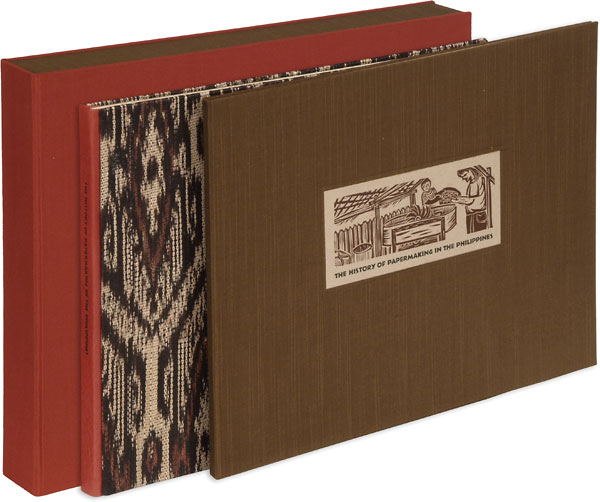The Da Vinci Creed
A Pair of California Book Artists Keep the Renaissance Alive
By Richard Goodman
You might say Peter and Donna Thomas, contemporary book artists in Santa Cruz, started out in the Renaissance. The age that produced some of our greatest works of art captured Peter Thomas’s professional imagination more than 30 years ago—when it occurred to him that America’s Renaissance fairs, where “people get dressed up like Robin Hood and Maid Marion,” would be “a good way to make a fairly consistent income.” He knew he’d have to find a trade, though—something he could demonstrate to the fair-going crowd. What about the art of paper-making? He went to the local library, checked out a book on the subject, and followed its instructions. Lo and behold, the fledgling paper maker secured a place at the fair.
Thomas’s interest jumped up a level when, in 1976, he began taking a course in book making from William Everson—known to most of the world as the poet Brother Antoninus—at the University of California at Santa Cruz (UCSC). Everson’s influence was profound. Many of us who’ve studied, and been captivated by, the literature of the Beat Generation, know of Brother Antoninus’s poetry. Yet not everyone knows that Everson—who’d already left the order by the time Peter Thomas met him—was also a master bookmaker. The founder of the Lime Kiln Press, Everson was associated with UCSC for nearly twenty years. Thomas studied with Everson and eventually became his assistant, until the poet’s death in 1994. “If it wasn’t for Everson,” Peter Thomas said, “I’d probably be a business card printer today.”
In 1977 Richard Thomas joined forces with his wife Donna, a painter and graphic artist, to start the Good Book Press. They went on to publish two books of poems written by Everson, The Poet Is Dead (1987), a eulogy for the misanthropic California poet Robinson Jeffers, and The Tarantella Rose, six previously unpublished poems by the former Dominican friar. Donna Thomas did the illustrations for those books.
At the start of their careers, however, Peter and Donna were acutely aware of the adage that you have to start small. In their case, it was quite small.
“I looked around and saw that the people who collected fine press books weren’t so inclined to buy the books of newcomers,” Peter said. “But I also noticed that there was a fairly large group who collected small books and who would buy books from a newcomer. So, that’s how we got our chops—making small books.” They produced over fifty different small books—and in fact still are producing them.
One case in point is the absolutely charming Spring Wildflower ABC (2-7/8" x 2-3/16"), produced in 2006. It consists of twenty-six wildflower paintings by Donna Thomas, one for each letter of the alphabet. The colophon informs the reader that the “flowers were found hiking in the Coast range of northern California” and “were painted on the spot.” Each wildflower is given its common and Latin name, and the intimate, vivid detail of the paintings would make Roger Tory Peterson envious.
I couldn’t help posing the inevitable question for all fine press artists: How did the Thomases make ends meet during those years—and even today?
“We bought a house, and rented out rooms,” Peter answered. “Now, we have two houses. We’ve had some very interesting renters through the years,” he said, wryly.
Meanwhile, the Thomas’ affinity for paper and papermaking never abated. In fact, it was, and is, responsible for some of their most striking works, including the esoteric but fascinating The History of Papermaking in the Philippines (2005), a culmination of almost twenty years’ work. Peter was inspired by a book artist from the Philippines who demonstrated how to make paper from plants, something he hadn’t considered before. An initial mild fascination about papermaking in the Philippines became somewhat of an obsession. Discovering that there simply was no book or history about the subject, Peter Thomas decided to write it himself. The result, after years of labor and research, much of it on site, is a book that is both learned and elegant.








 Richard Goodman is the author of The Soul of Creative Writing and French Dirt: The Story of a Garden in the South of France. A founding member of the New York Writers Workshop, Goodman teaches creative nonfiction at Spalding University in Louisville, Kentucky. He’s written for the New York Times, the Harvard Review, Commonweal, Saveur, the Michigan Quarterly Review and many other publications. His essay, “In Search of the Exact Word,” was included in the Oxford American Writer’s Thesaurus. He lives in New York City.
Richard Goodman is the author of The Soul of Creative Writing and French Dirt: The Story of a Garden in the South of France. A founding member of the New York Writers Workshop, Goodman teaches creative nonfiction at Spalding University in Louisville, Kentucky. He’s written for the New York Times, the Harvard Review, Commonweal, Saveur, the Michigan Quarterly Review and many other publications. His essay, “In Search of the Exact Word,” was included in the Oxford American Writer’s Thesaurus. He lives in New York City. 


